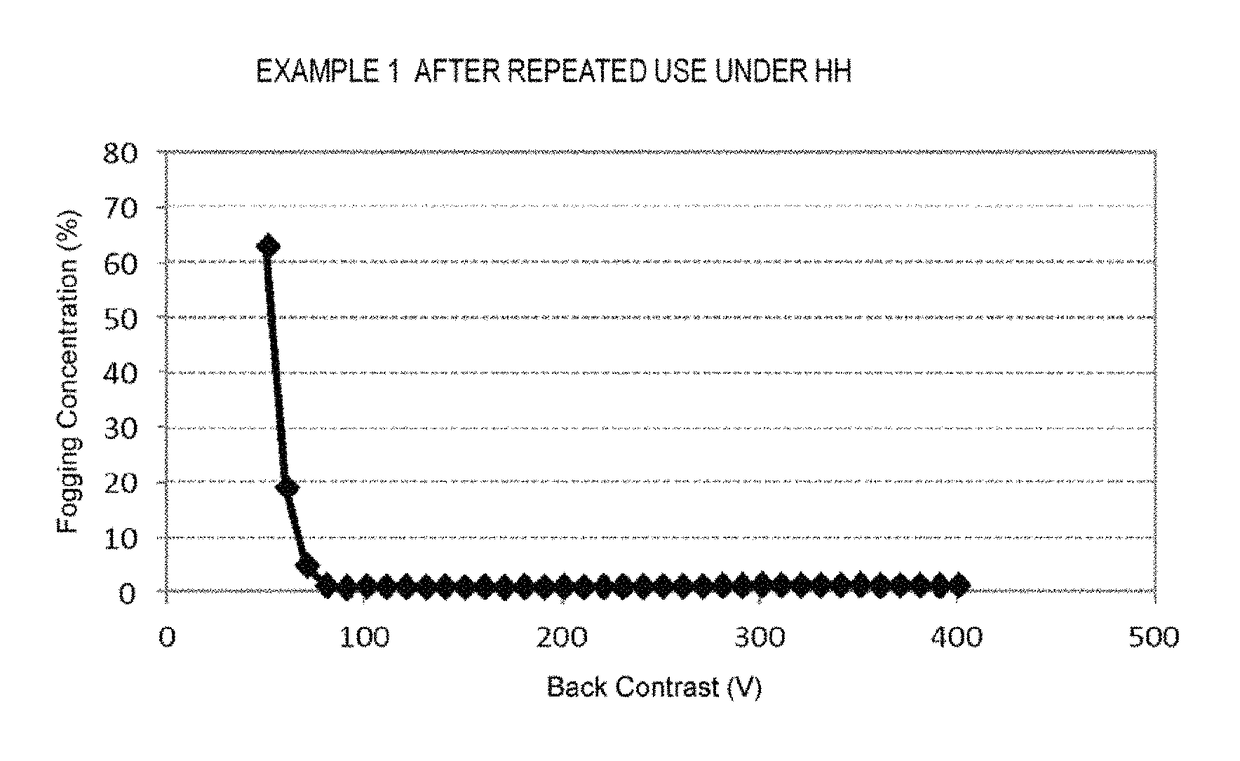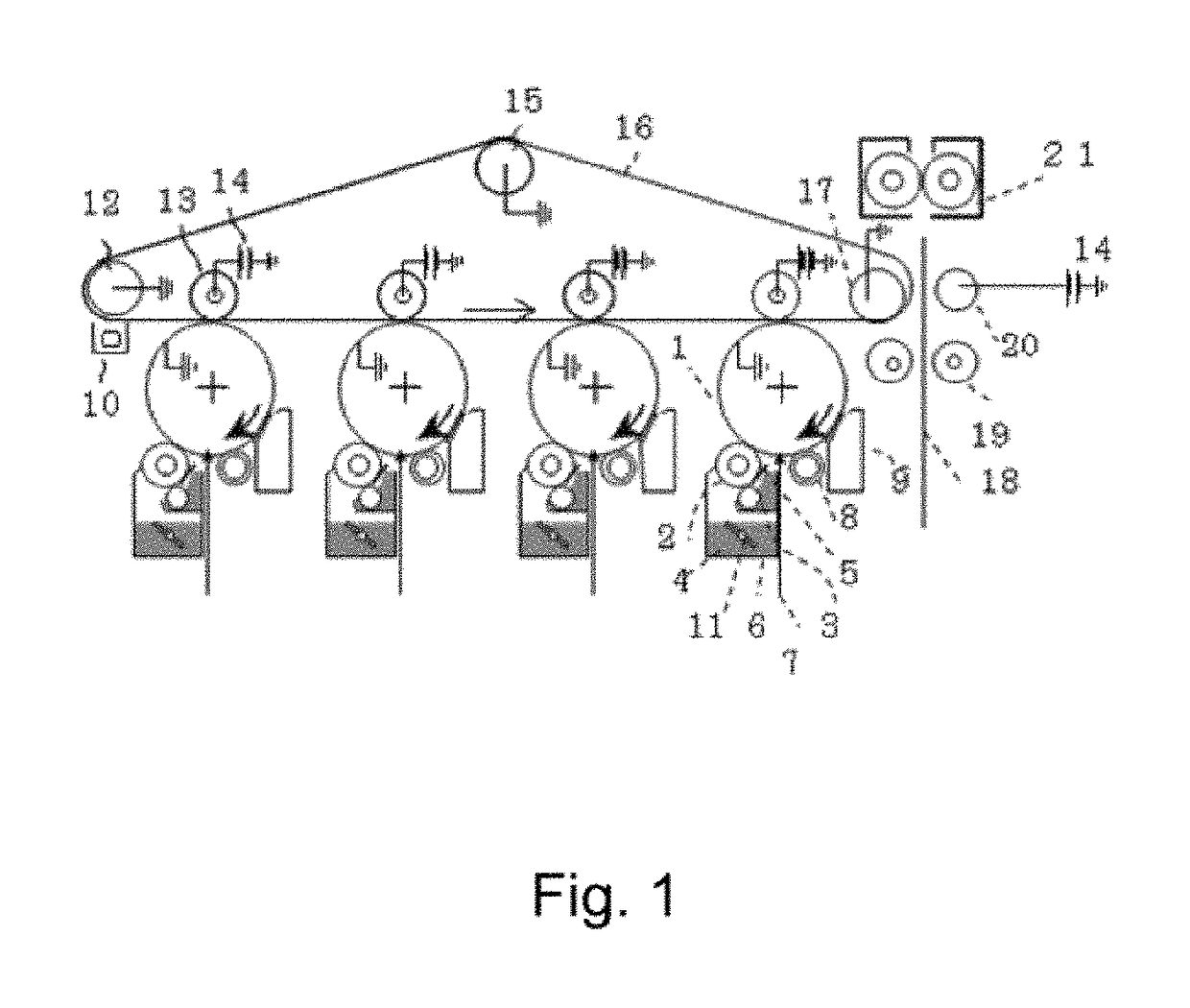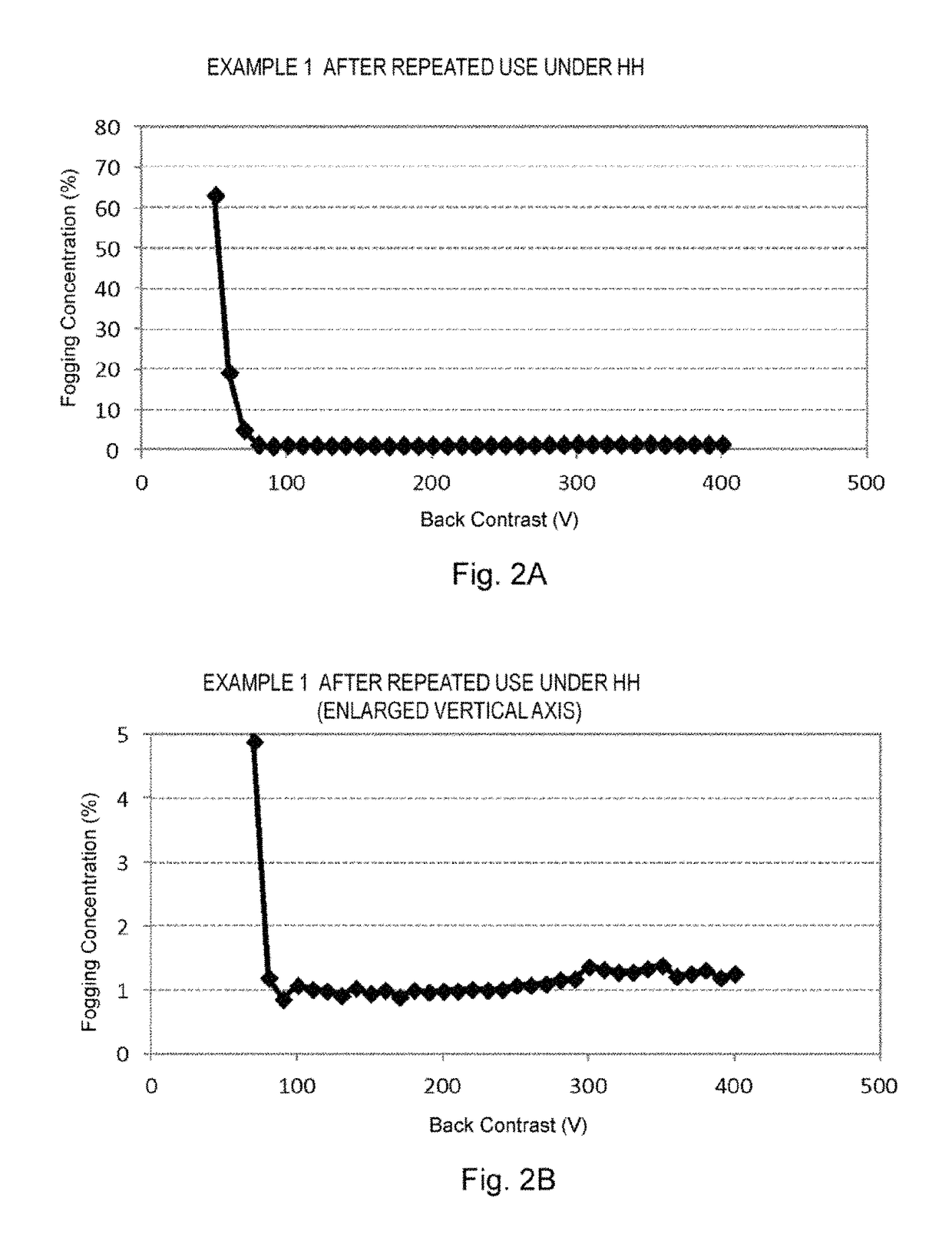Toner and process for producing toner
a technology of toner and process, applied in the field of toner, can solve the problems of image fogging, increased cost of toner, and general cost of pigments
- Summary
- Abstract
- Description
- Claims
- Application Information
AI Technical Summary
Benefits of technology
Problems solved by technology
Method used
Image
Examples
examples
[0132]The present invention is described in detail hereinbelow using specific production methods, examples, and comparative examples, but in no way the present invention is limited to them. Furthermore, “parts” for the following blending is “parts by mass” in all cases.
[0133]78.6 g of 2,4-dihydroxybenzoic acid was dissolved in 400 ml of methanol, and 152.0 g of potassium carbonate was added thereto. The resultant was heated to 60° C. A solution in which 87.9 g of 4-(chloromethyl)styrene and 100 ml of methanol are mixed and dissolved was dropped to the reaction solution, and the resultant was allowed to react at 60° C. for 2.5 hours. The obtained reaction solution was cooled and then filtered and washed with methanol.
[0134]The obtained precipitates were dispersed in 1 L of water at pH 1 with hydrochloric acid. After that, they were filtered, washed with water and dried at 80° C. to obtain 55.7 g of the polymerizable monomer M-1 represented, by the following structural Formula (3).
[01...
PUM
| Property | Measurement | Unit |
|---|---|---|
| acid dissociation constant pKa | aaaaa | aaaaa |
| acid dissociation constant pKa | aaaaa | aaaaa |
| acid dissociation constant pKa | aaaaa | aaaaa |
Abstract
Description
Claims
Application Information
 Login to View More
Login to View More - R&D
- Intellectual Property
- Life Sciences
- Materials
- Tech Scout
- Unparalleled Data Quality
- Higher Quality Content
- 60% Fewer Hallucinations
Browse by: Latest US Patents, China's latest patents, Technical Efficacy Thesaurus, Application Domain, Technology Topic, Popular Technical Reports.
© 2025 PatSnap. All rights reserved.Legal|Privacy policy|Modern Slavery Act Transparency Statement|Sitemap|About US| Contact US: help@patsnap.com



